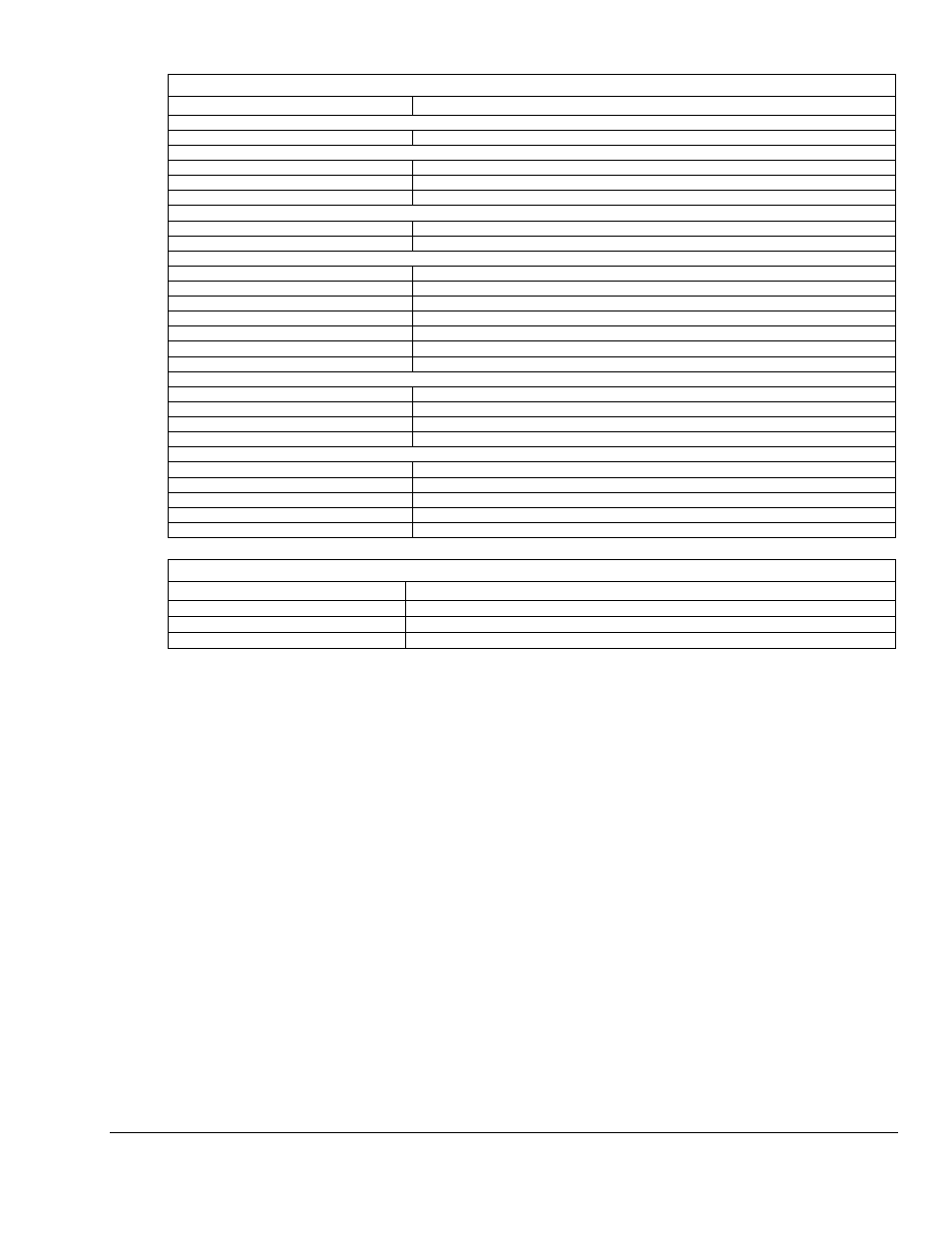Devport–(daqiodeviceport), Whichexpport-(daqioexpansionport), Function usage – Measurement Computing Data Acquisition Systems rev.10.4 User Manual
Page 257: Local i/o

Programmer’s Manual
908794
Daq API Command Reference 4.5-27
devPort–(DaqIODevicePort)
Definition Description
Local Bit I/O
DiodpBitIO
P2 – Addressing by bit
P2 Sequential 8-Bit Addressing
DiodpP2Local8
P2 – Local addressing by byte
DiodpP2LocalIR
P2 – Local Internal register (for configuring P2)
DiodpP2Exp8
P2 – Expansion adressing by byte
P3 Digital Port
DiodpP3LocalDig16
P3 – Local addressing for HS 16-bit Dig I/O
DiodpP3LocalDigIR
P3 – Local Internal register (for configuring P3)
Local 8255, Dbk20, Dbk21 (Daq Device and DBK)
Diodp8255A
P2 – Digital byte wide Port A
Diodp8255B
P2 – Digital byte wide Port B
Diodp8255C
P2 – Digital byte wide Port C
Diodp8255IR
P2 –Internal register (for configuring P2)
Diodp8255CHigh
P2 – Digital 4-bit wide Port C
Diodp8255CLow
P2 – Digital 4-bit wide Port C
DiodpP3LocalCtr16
P3 – 16-bit Counter
Dbk23
DiodpDbk23A
DBK23 – Digital byte wide Port A
DiodpDbk23B
DBK23 – Digital byte wide Port B
DiodpDbk23C
DBK23 – Digital byte wide Port C
DiodpDbk23Unused
Not used
Dbk24
DiodpDbk24A
DBK24 – Digital byte wide Port A
DiodpDbk24B
DBK24 – Digital byte wide Port B
DiodpDbk24C
DBK24 – Digital byte wide Port C
DiodpDbk24Unused
Not used
DiodpDbk25
DBK25
whichExpPort-(DaqIOExpansionPort)
Definition
Description
DioepP1
Note that DioepP1 is for DigiBook only.
DioepP2
DBK20/21 Port 2
DioepP3
DBK20/21 Port 3
Function Usage
The daqIORead function will return the current state of the port in the value parameter. Normally, if the
selected port is a byte-wide port, the port state will occupy the low-order byte of the value parameter. Digital IO
channels for the port corresponds to each bit within this low-order byte. If the bit is set, it indicates the channel is in
a high state. If the bit is not set, the channel is indicated to be in a low state. This function requires that
daqIOGet8255Conf
or daqSetOption be called prior to invocation to configure the specifed port as an input
port.
Local I/O
Those devices which support the P2 port have built-in Intel 8255C chips which can be used as general purpose I/O.
The 8255C has 3 configurable DIO ports (PortA, PortB, PortC). These ports are 8-bit ports which can be
individually programmed as either input or output ports. All three of the local P2 ports can be read asynchronously
using the daqIORead function.
Additionally, there is a 16-bit Digital port on P3 of the main unit.* If devices allow this port to be used as a high
speed digital port which can be scanned synchronously along with other analog channels in a acquisition.
Some devices, such as the DaqBook/2000 Series, DaqLab/2000 Series, DaqScan/2000 Series, DaqBoard/2000
Series [and 2000c Series] products, can also access this port asynchronously as a general purpose DIO port. If using
the DaqBoard/2000 Series [or 2000c Series] products, the daqIORead function can be used to read this port
asynchronously.
*
Note
:
P3 for DaqBoard/2000 Series boards is obtained by connecting an appropriate DBK200 Series board to the DaqBoard/2000
Series board’s P4 connector, via cable.
